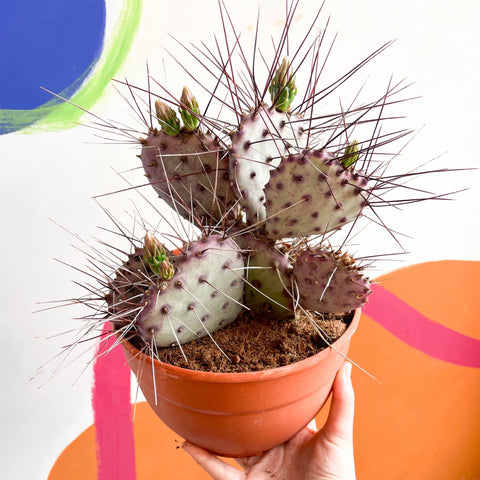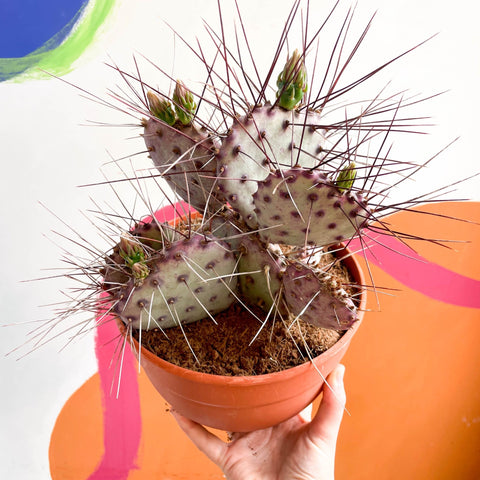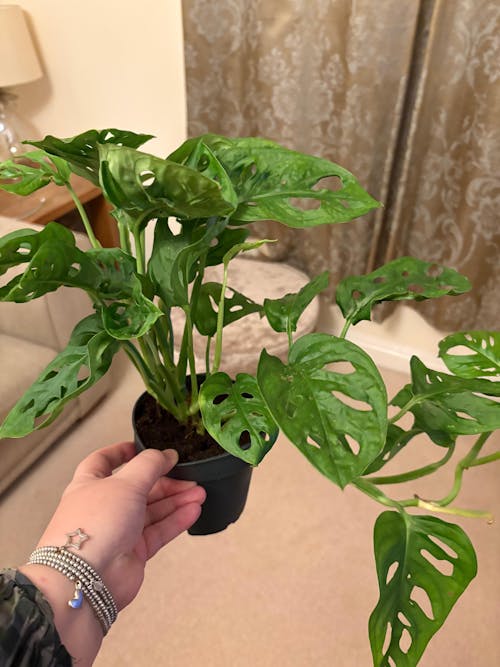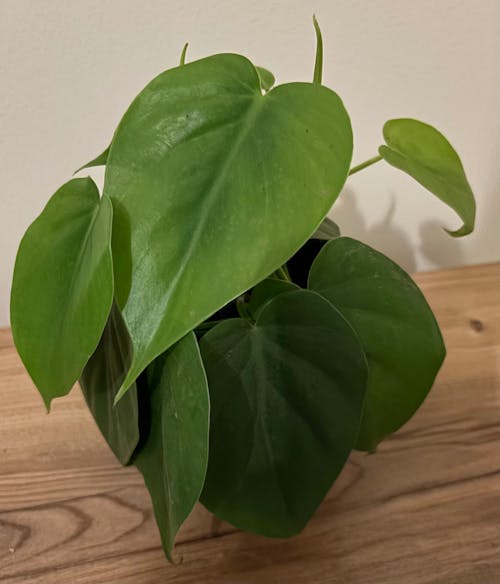Scientific Name
Opuntia violacea 'Lianne' (violet-coloured plant from Opus, variety: Lianne)
Common Name
Redeye Prickly Pear, Purple Prickly Pear, Purple-Tinged Prickly Pear; Black-Spine Prickly Pear, Black-Spined Prickly Pear, Blackspine Purple Prickly Pear, Prickly Pear
Origin
This plant is native to southeastern Arizona and Texas in the US and northern Sonora, in Mexico
Description
This Prickly Pear stands out even more than others with its striking colouring on top of its unusual shape. Each paddle-shaped 'leaf' is covered in dark spikes, which extend outwards from the deepest purple patches on the surface of the leaves. The rest of the leaf's pale green is tinted violet, striking colouring which draws even more attention- once the huge spikes and dramatic silhouette of the plant have established its place as the centre of attention! This dramatic plant doesn't need too much care, though; as long as it has a nice spot in the sun, it only needs the occasional water and will appreciate being admired from afar.
Light
Thrives best in bright light; will love your brightest windowsill (try South-facing if in doubt!).
Water
Allow all the soil to dry out between watering; if the pads curl it may have too much sun and too little water; if it starts to grow mushy or rot at the roots, likely too much water and too little sun.
Humidity
Low humidity is perfect for cacti; a hose down to clean now and again is fine as long as the plant dries and doesn't sit damp.
Soil
Needs a well-draining pot and potting mix; look for specific 'cacti and succulent' soils with plenty of sand and other well-draining materials. Only repot if absolutely necessary: use the next size pot up, repot in the spring, and no more frequently than every three years.
Food
Feed every two months in the growing season, and every three in autumn and winter. Use 'cactus' labelled feed.
Temperature
Likes temperatures of 20-32°C; don't let it drop below 10°C in winter.
Pet-safe
No, this plant is toxic to pets and small humans.
Sprouts Top Tips
This is a flowering variety; to make it more likely you'll see the blooms, let it have a proper dormancy in autumn/winter with lower temperatures and less frequent watering and fertilising, and then increase these as the weather warms. The warmer the cactus is in summer, the more likely you'll see flowers!

























